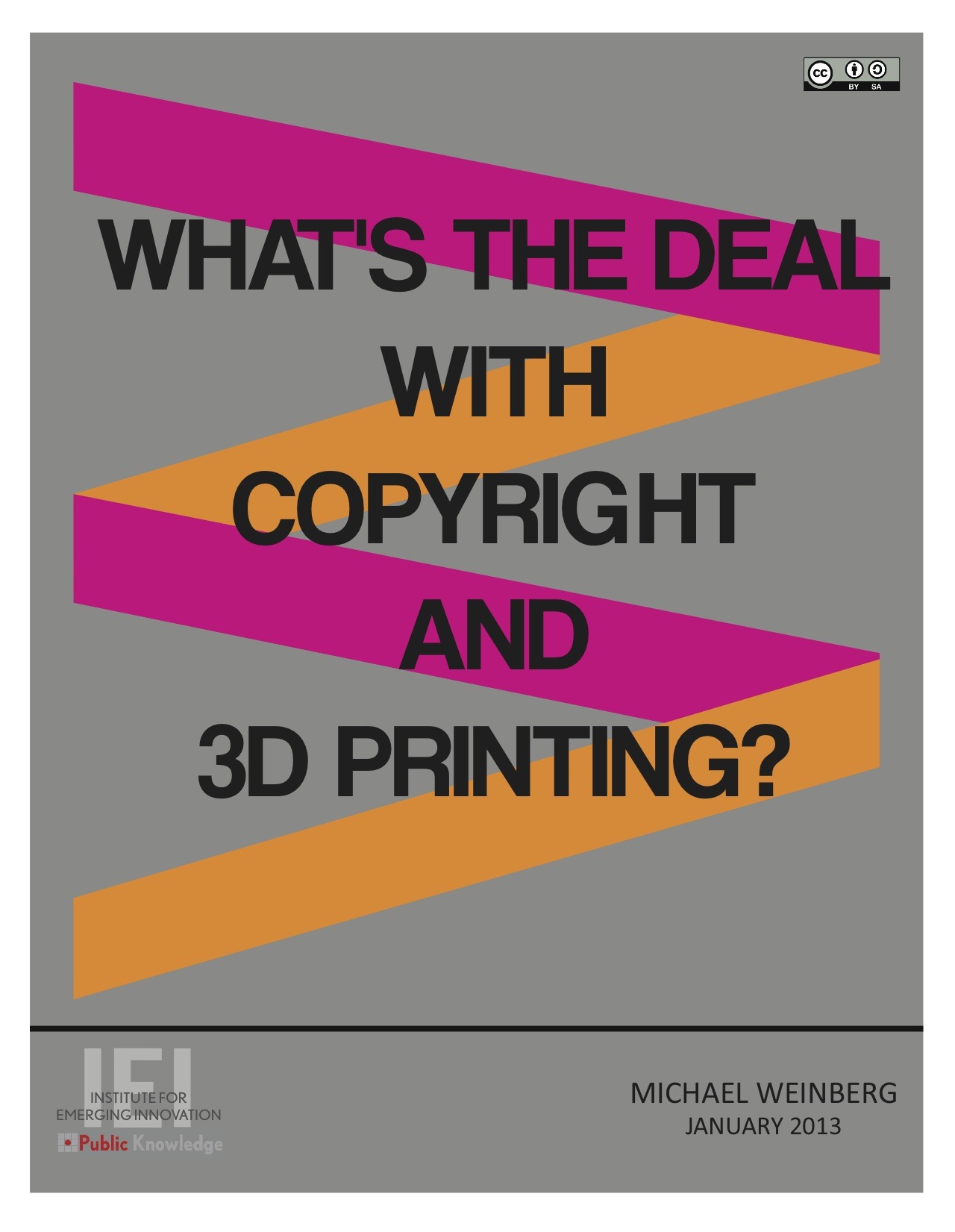3D printing means more people are becoming professional designers, creating and selling even more things. Although most of these designers are creating wholly original objects, it should not be a surprise that some are building off of existing TV shows, movies, and books. The result: the world of merchandising is about to confront a long tail that can’t be monitored or controlled. How should rightsholders respond? By embracing it.
While it will be a long time before 3D printers deliver custom cell phones and hot tea on demand, today it is beginning to usher in a new era in product design. With access to low cost 3D printers, individual designers and small design shops can rapidly prototype and perfect physical goods. They can then turn to more sophisticated 3D printing services that can print finished products on demand. Suddenly, you do not need to be associated with a large company to sell professional-quality physical goods to the public.
One benefit of this is that the universe of people trying to think of physical things based on TV shows, movies, and books is going to get a lot bigger. This will lead to more interesting, creative, and unexpected products. However, this diversity comes at a cost. A rightsholder used to dealing with a handful of potential marketing partners must now find a way to sort through multitudes of ideas coming from all corners of the internet. That rightsholder may be forgiven for thinking that any great new ideas are not worth the effort of searching for them.
But rightsholders may not have the luxury of ignoring this shift. Take, for example, HBO and the designer Fernando Sosa. Sosa created a cell phone dock designed to look like the Iron Throne from the HBO series Game of Thrones. He began pre-selling the dock and intended to 3D print them for customers. Unfortunately for Sosa, he did not have a license from HBO. Upon learning of the product HBO, citing existing exclusive contracts with other merchandisers, sent Sosa a letter requesting that he stop offering it for sale.
Although nominally the end of the story, in taking down Sosa’s dock HBO also created a problem: it wasn’t selling them either. Sosa had identified a market for Iron Throne phone docks. But by insisting that Sosa stop selling his, HBO had taken away the only way that a customer could pay for such a thing. This was a missed opportunity.
A Different Path
How could HBO have responded differently? It could have negotiated a license with Sosa for his dock. That would have allowed Sosa’s customers to purchase the object and HBO to make some money from the transaction.
But even that would only have been a short-term solution. After all, the world is full of people like Sosa who love HBO shows and have great ideas for turning them into attractive products. Why not bring them all in at once?
One way to do this would be to create a transparent, available license. Simply put, HBO could make an offer to any designer: turn Game of Thrones into a product. Let us know about it. Sell it. And give us a cut. They could even include a caveat excluding some categories of products and reserving the right to revoke the license for specific products they find problematic.
Even with those limitations, such an offer could lead to an explosion of creative objects. HBO would benefit from the increased publicity from the objects and, not incidentally, from a percentage of the sales. Designers would benefit from the knowledge that they could actually bring their dream product to market at the beginning of the design process. HBO and any individual designer would be free to negotiate a different arrangement, but the offer would create some certainty without requiring an additional negotiation.
Of course, some might worry that such an available license would lead to a loss of control for HBO and for rightsholders more generally. For better or worse (and mostly better), 3D printing makes it much easier for anyone to create physical objects. That means that rightsholders’ current control may be more illusory than it appears. Recognizing that early could be a competitive advantage. Rightsholders are certainly free to continue playing takedown letter whack-a-mole for every new design that pops up on the internet, but that strategy has its limits. In the end, it may be easier to harness the collective creativity of designers than try to stop it.

